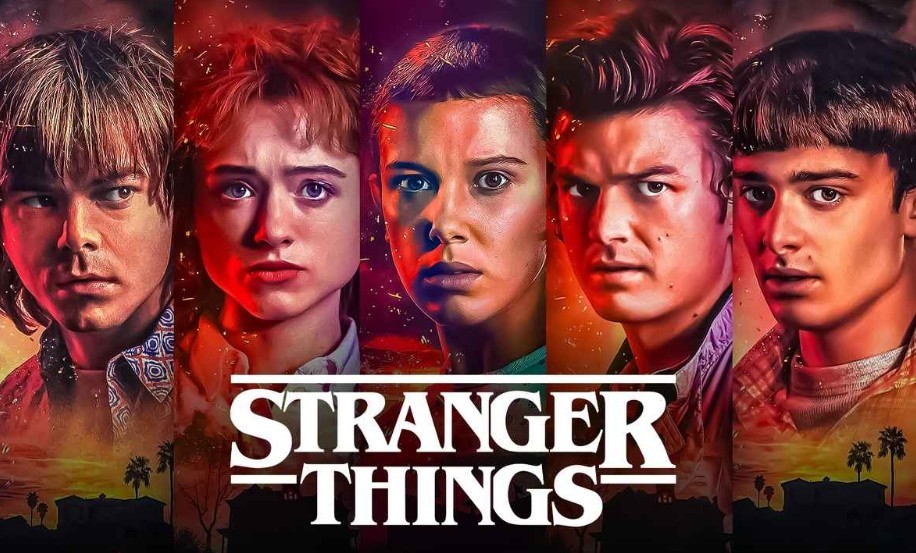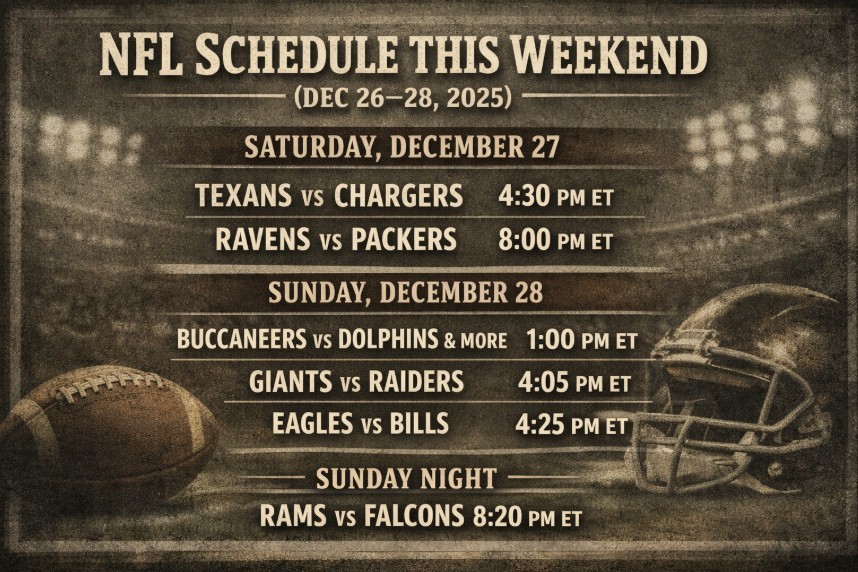Kumbh Mela: Date & Time, History, How to Celebrate & Rituals
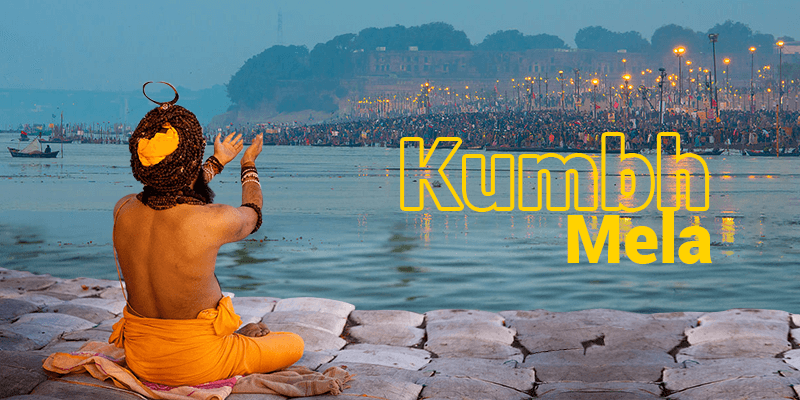 |
| Kumbh Mela 2021 is held in Haridwar. Photo: RailYatri Blog |
What is Kumbh Mela?
Kumbh Mela, also called Kumbha Mela, in Hinduism, a religious festival that is celebrated four times over the course of 12 years, the site of the observance rotating between four pilgrimage places on four sacred rivers—at Haridwar on the Ganges River, at Ujjain on the Shipra, at Nashik on the Godavari, and at Prayag (modern Prayagraj) at the confluence of the Ganges, the Jamuna, and the mythical Sarasvati.
Each site’s celebration is based on a distinct set of astrological positions of the Sun, the Moon, and Jupiter, the holiest time occurring at the exact moment when these positions are fully occupied. The Kumbh Mela at Prayag, in particular, attracts millions of pilgrims. In addition, a Great Kumbh Mela festival is held every 144 years at Prayag; the 2001 festival attracted some 60 million people.
Attendees at the Kumbh Mela come from all sections of Hindu religious life, ranging from sadhus (holy men), who remain naked year-round or practice the most severe physical discipline, to hermits, who leave their isolation only for these pilgrimages, and even to silk-clad teachers using the latest technology.
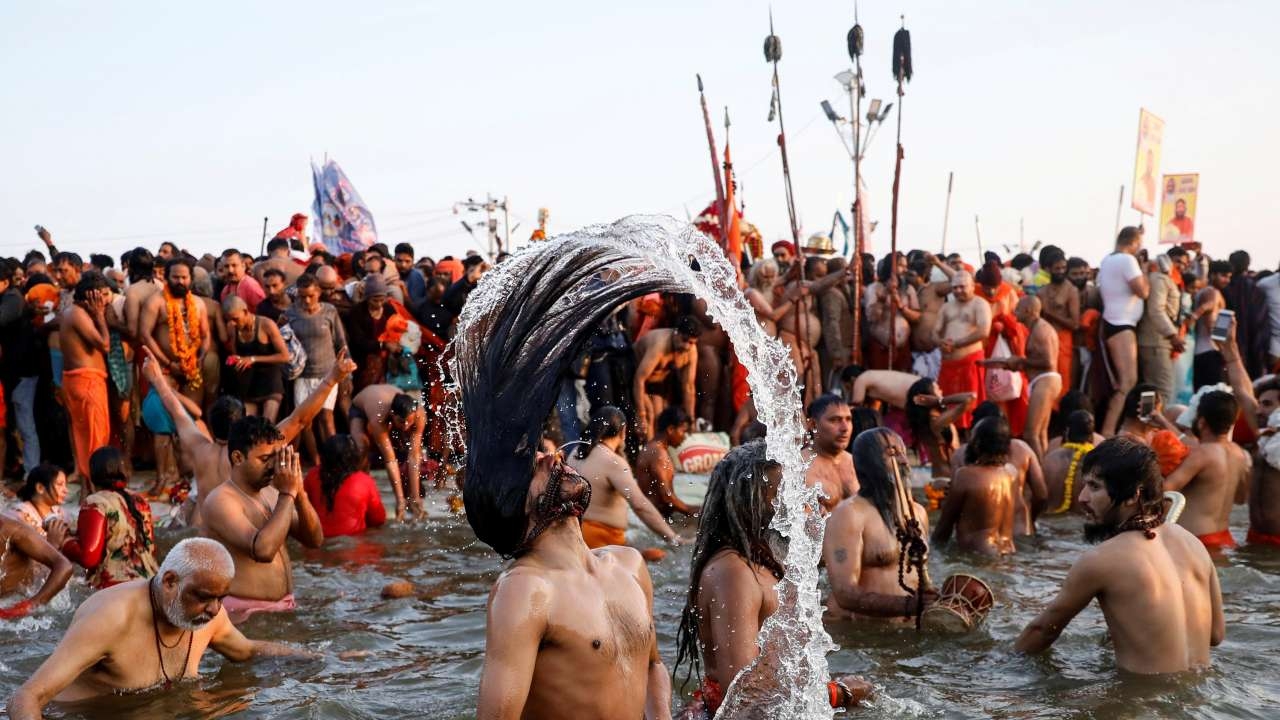 |
| Photo: DNA India |
The religious organizations represented range from social welfare societies to political lobbyists. Vast crowds of disciples, friends, and spectators join the individual ascetics and organizations. The naga akhadas, militant ascetic orders whose members formerly made their livings as mercenary soldiers and traders, often claim the holiest spots at each Kumbh Mela’s most propitious moment. Although the Indian government now enforces an established bathing order, history records bloody disputes between groups vying for precedence.
Types of Kumbh Mela and its occurrence:
• Kumbha Mela - held at all four places every 3 years
• Ardha Kumbha Mela - held at Haridwar and Allahabad every 6 years
• Purna Kumbha Mela - held only at Allahabad every 12 years
• Maha Kumbha Mela - held only at Allahabad every 144 years
Kumbh Mela Dates and Time
According to The Times of India, the Kumbh Mela is held in Haridwar from January 14 to April 27. The Haridwar Kumbh Mela started on Makar Sankranti on January 14 and will continue till April. It will be held for 48 days instead of the usual three-and-half-months. The Maha Kumbh in Haridwar is being held after twelve years.
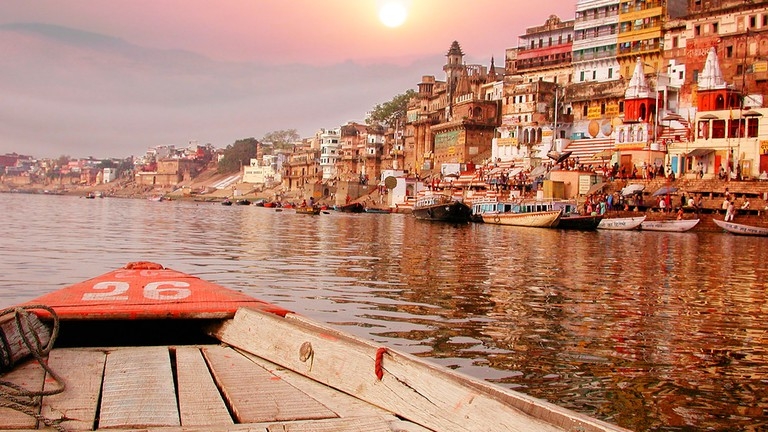 |
| The Ganges, the holiest river in India. Photo: Culture Trip |
It will witness the coming together of millions of pilgrims, accompanied by sadhus and different akharas, to take a dip in the holy River the Ganges. The bathing dates for this mega event have already been announced and they are mentioned below.
• Makar Sankranti (Snan): 14 January 2021
• Mauni Amavasya (Snan): 11 February 2021
• Basant Panchami (Snan): 16 February 2021
• Magh Poornima: 27 February 2021
• Maha Shivratri (Shahi Snan): 11 March 2021
• Somvati Amavasya (Shahi Snan): 12 April 2021
• Baisakhi (Shahi Snan): 14 April 2021
• Ram Navami (Snan): 21 April 2021
• Chaitra Purnima (Shahi Snan): 27 April 2021
The history of Kumbha Mela
Tradition ascribes the Kumbh Mela’s origin to the 8th-century philosopher Shankara, who instituted regular gatherings of learned ascetics for discussion and debate. The founding myth of the Kumbh Mela—attributed to the Puranas (collections of myth and legend)—recounts how the gods and demons fought over the pot (Kumbha) of amrita, the elixir of immortality produced by their joint churning of the milky ocean, as cited by Britannica.
During the struggle, drops of the elixir fell on the Kumbh Mela’s four earthly sites, and the rivers are believed to turn back into that primordial nectar at the climactic moment of each, giving pilgrims the chance to bathe in the essence of purity, auspiciousness, and immortality. The term Kumbh comes from this mythic pot of elixir, but it is also the Hindi name for Aquarius, the sign of the zodiac in which Jupiter resides during the Haridwar Mela.
The significance of Kumbha Mela
Hindus believe that bathing in the sacred water during the Kumbh Mela makes them eternally blessed by the divine. Also, bathing in the river washes away the sins and you become one step closer to salvation.
Kumbh Mela in 2013 attracted a crowd of approximately 10 crore people making a record. Many holy men from different Hindu sects attend the meal. Some of them include Nagas (who do not wear any clothes), Kalpwasis (who bathe thrice a day), and urdhawavahurs (believe in putting the body through severe austerities).
The festival is around 2000 years old. The first written account of the Mela was found in the account of the Chinese traveler Xuanzang, who visited India during the rule of king Harshavardhana.
How is Kumbh Mela celebrated?
The main ritual of Kumbh Mela is bathing in the rivers. Washing in holy waters is believed to deliver worshippers from their past sins and lead them to moksha, or liberation from the cycle of birth and death. A vast tent city dubbed a “pop-up megacity” has been built around the delta in Prayagraj to accommodate the millions that will come to submerge themselves in the sacred rivers.
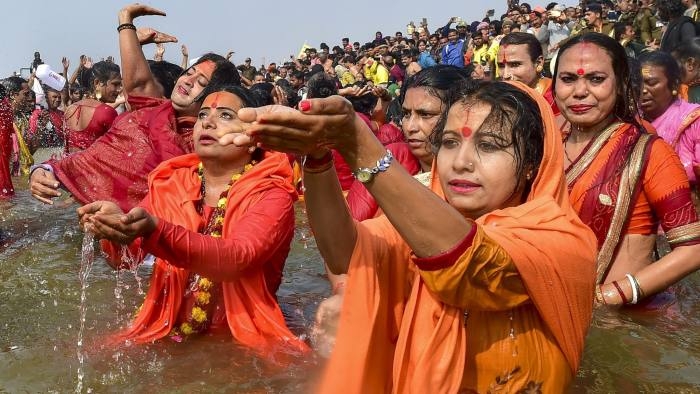 |
| Photo: Financial Times |
Worshippers will line up before sunrise, and proceed into the water throughout the day. On Feb. 4, the most auspicious bathing day, 30 million are expected to attend, the BBC reports.
Ascetics, known as sadhus, also play essential roles in the tradition. There are a variety of sadhus, some of which are recognizable by their matted hair and naked bodies coated in ash. Although they generally lead lives of isolation, at Kumbh Mela these holy men come together en masse in pursuit of enlightenment.
Other Activities during Haridwar Kumbh Mela 2021
Have a meeting with Naga Sadhus
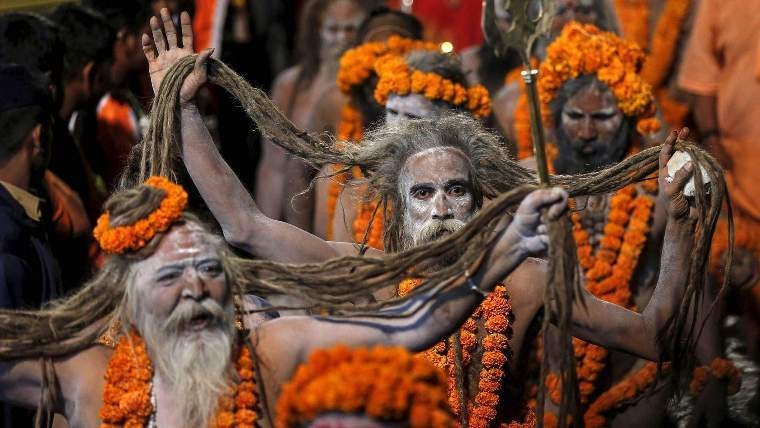 |
| Photo: State Express India |
As soon as you hear about Kumbh, you think of Naga Sadhus or Naga Babas. Naga Sadhus have become an immovable symbol associated with Kumbh. This big congregation of Kumbh comprises Naga Sadhus all over. They attract everyone’s attention due to their unusual looks without clothes, having spiritual powder on their body, and wearing unordinary jewels and Malas, as cited by State Express India.
While being a part of Kumbh Mela, you can interact with Naga Sadhus, and understand the purpose for which they perform a never-ending ‘Sadhna,’ and the reason due to which they give up everything so easily.
Be a part of Kirtans and Kathas
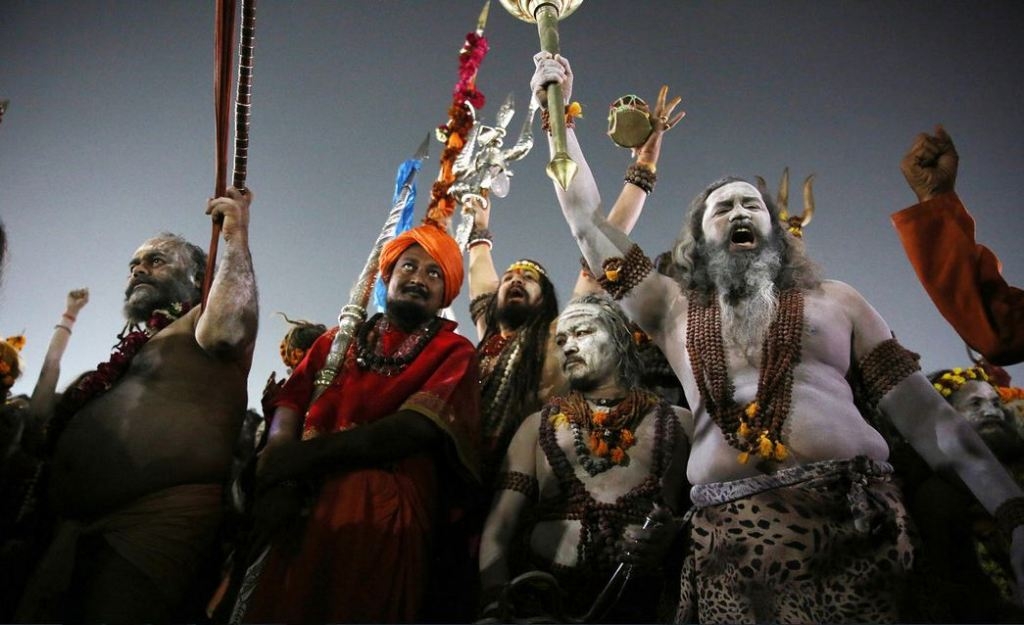 |
| Photo: State Express India |
Being a hub of storytellers, and spiritual devotees, Kumbh incorporates countless Kirtans and Kathas happening at distinct places by different Sadhus. By attending these spiritual sessions, you can listen to Indian scriptures’ stories, devotional songs, relaxing music, as well as, unavoidable life lessons. Also, you’ll get to know about the epics like Mahabharata, Ramayana, and Bhagwat Puran, etc.
Enjoy eating at a Bhandara
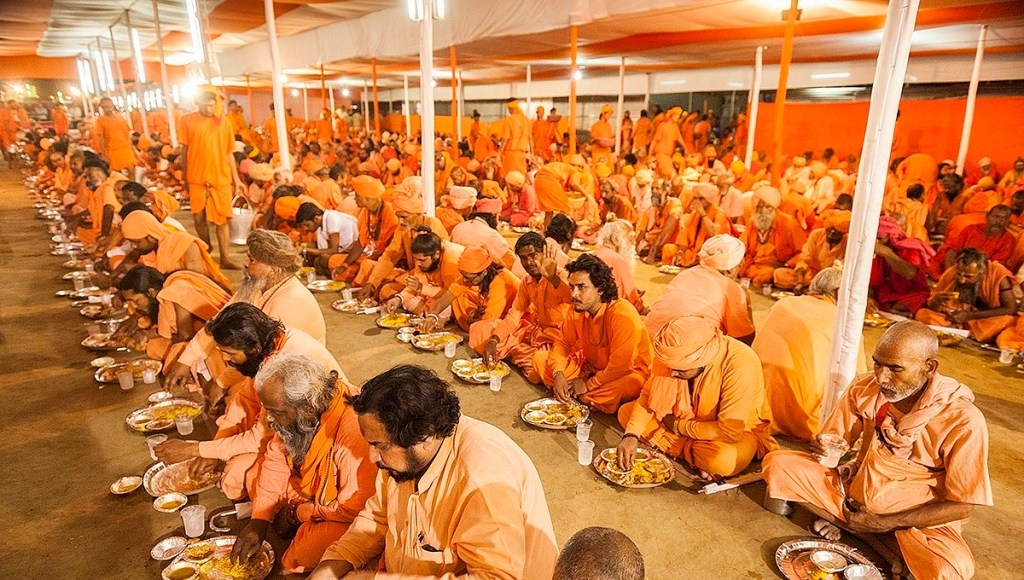 |
| Photo: State Express India |
Bhandara comprises a feast, i.e., organized by different sponsors participating in Kumbh Mela. These Bhandaras remain open to all, and you can enjoy the food there for free. Most of the devotees at the fair be a part of Bhandara by considering the food as Prasad, i.e., holy. And, accept the Bhandara food as an offering from God itself.
Kumbh Mela 2021 in the context of COVID-19
The Kumbh Mela is underway at Haridwar now. This year the Mahakumbh is taking place after 12 years. Amid the Covid-19 pandemic, the Uttarakhand government has asked the center for an additional 20,000 vaccines for the Kumbh Mela. The state government has sent a request to the center for more vaccines, Dr. Abhishek Tripathi, state Covid control room chief told news agency ANI. The Covid-19 vaccination drive began in Uttarakhand on Saturday, with healthcare workers getting the first shots at the Doon Hospital in the presence of Chief Minister Trivendra Singh Rawat.
| According to NDTV, millions of pilgrims are expected in Haridwar over the coming weeks during the Kumbh Mela amid the pandemic. An organization in the temple town has launched a campaign to send the waters of the Ganga to people who may not be able to visit the Kumbh due to coronavirus-linked restrictions in place. The campaign, "Aapke Dwar Pahuncha Haridwar" (Haridwar comes to your doorstep) was launched on Makar Sankranti. Haridwar has turned into a hub of mythology-themed wall graffiti for the Mahakumbh. A campaign, "Paint My City", by the Haridwar-Roorkee Development Authority has been launched. "An entire team is working on the paintings that focus on bringing the Indian culture to the forefront...this will also make Kumbh a memorable experience for tourists", Pritam an artist from Noida said. |
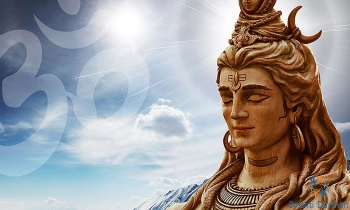 2021 Maha Shivratri Day: Date & Time, History, How Celebrate, Rituals 2021 Maha Shivratri Day: Date & Time, History, How Celebrate, Rituals Let's discover Maha Shivratri 2021, one of the most significant Hindu festivals all over the world and especially in India: History of this day, How ... |
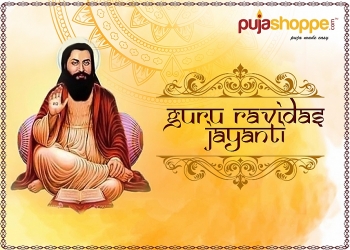 Guru Ravidas Jayanti Holiday: When, History, How to Celebrate, Great quotes and Inspirational Messages Guru Ravidas Jayanti Holiday: When, History, How to Celebrate, Great quotes and Inspirational Messages "Guru Ravidass Jayanti", the birthday of Guru Ravidas, celebrated on Magh Purnima, the full moon day in the month of Magh month, is one of ... |
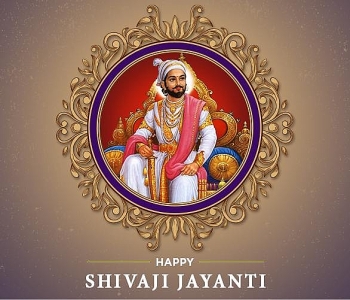 What is Shivaji Jayanti: Date, Time, History and Celebrations of an optional holiday in India What is Shivaji Jayanti: Date, Time, History and Celebrations of an optional holiday in India Shivaji Jayanti, or Chhatrapati Shivaji Maharaj Jayanti in full, is an interesting holiday in India that everyone who is visiting India would like to take ... |


